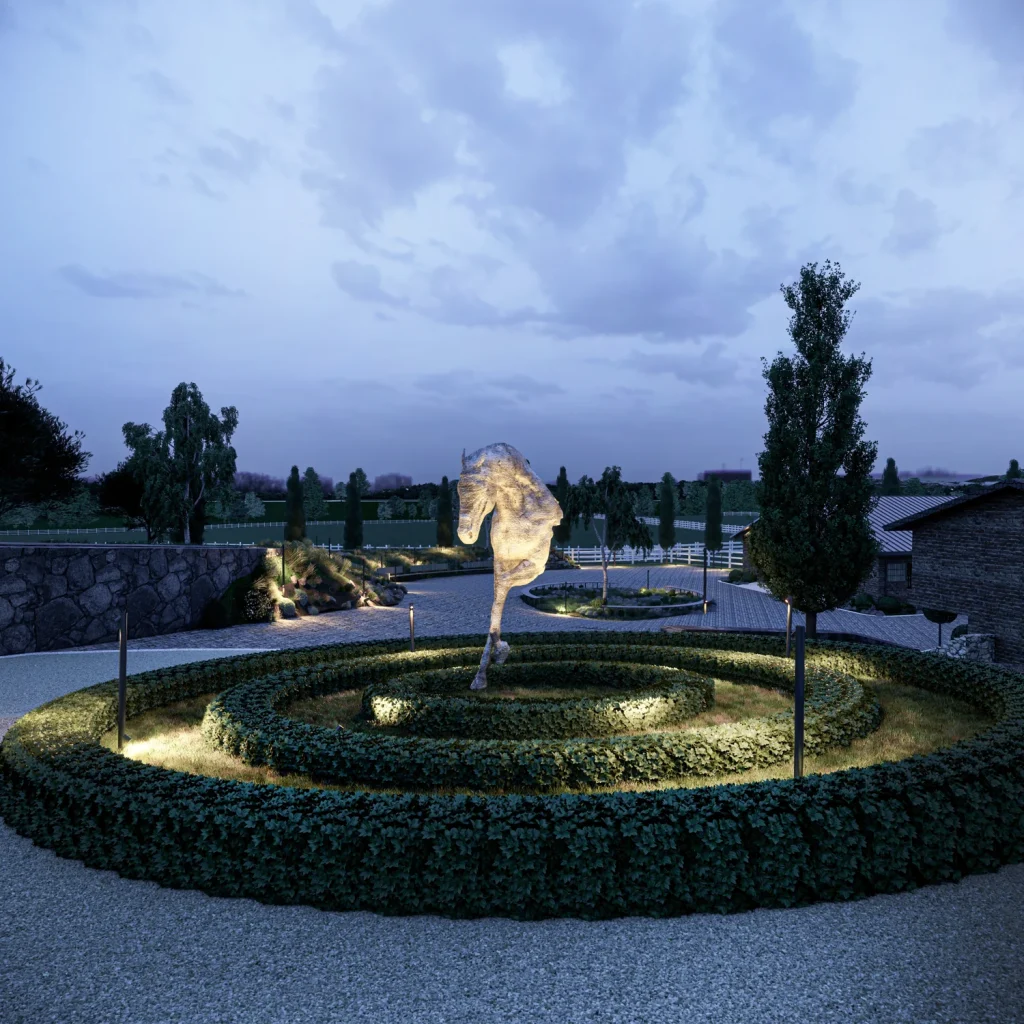As Equine Design Studio, we are with you every step of the way as we bring your custom designed horse farm to life. Horse farm construction requires a detailed planning and implementation process. Let us explain the important points and stages to be considered in this process in detail for you.
1. Planning Phase
- Land Analysis:
Soil Structure: Factors such as the bearing capacity of the land and water retention determine the type of construction. Slope: Additional measures such as drainage systems and support walls should be taken on sloping land. Water Resources: Water sources such as wells, fountains or infrastructure required for irrigation systems are examined. Environmental Impact: Environmental impacts are assessed for an environmentally sensitive design.
- Budget Determination:
Detailed Cost Analysis: All items such as land acquisition, construction, materials, labor, equipment are calculated in detail. Flexible Budget Planning: Alternative budgets are prepared for different scenarios. Government Supports: Opportunities to benefit from government supports in the field of agriculture and animal husbandry are investigated.
- Legal Procedures:
Zoning Plan: The zoning status and construction limits of the land are determined. Building Permits: Necessary permits are obtained. Environmental Impact Assessment (EIA): If necessary, an EIA report is prepared.
- Design:
Functional Design: The size, layout and equipment of the stables are determined according to the needs of the horses. Aesthetic Design: The general appearance of the farm, its harmony with the environment and your personal taste are taken into consideration. Sustainable Design: Sustainability principles such as energy efficiency and water saving are taken into consideration.
2. Construction Phase
- Foundation Preparation:
- Soil Testing: The soil’s bearing capacity and groundwater level are determined.
- Foundation Type: The appropriate foundation type is selected based on the building load and soil characteristics.
- Stable Construction:
- Material Selection: Different materials such as wood, steel, or concrete can be used.
- Ventilation: Adequate ventilation is provided to ensure the horses’ health.
- Lighting: Natural and artificial lighting systems are installed.
- Insulation: Insulation is provided against hot and cold weather conditions.
- Outdoor Arrangement:
- Paddocks: Safe areas where horses can roam freely are created.
- Riding Arenas: Arenas are arranged for horses to exercise.
- Obstacle Courses: Obstacle courses are built for horse riding training.
- Irrigation and Drainage Systems:
- Automatic Watering Systems: Automatic watering systems are installed to meet the horses’ water needs.
- Drainage Systems: Drainage systems are created to prevent water accumulation.
- Electrical and Plumbing Systems:
- Electrical System: A safe and efficient electrical system is installed.
- Plumbing System: The necessary water supply system is installed for watering and cleaning.
3. Final Stage
- Landscaping:
- Green Areas: Grass, trees, and shrubs are planted.
- Ornamental Ponds: Ornamental ponds can be created for an aesthetic appearance.
- Equipment Installation:
- Feeding Systems: Systems are installed to store and distribute feed in a clean and hygienic manner.
- Horse Care Equipment: Equipment necessary for hoof care, cleaning, and other tasks is provided.
- Delivery and Training:
- Delivery: The completed project is delivered to you.
- Training: Training is provided on the use and maintenance of the farm.

